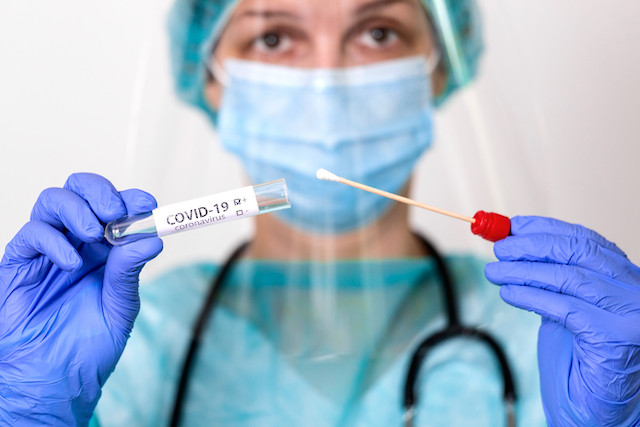To add a further layer of complexity to the situation, with winter setting in symptoms become difficult to distinguish thanks to the onset of the common cold or flu. Clarification is needed surrounding the haze of testing and to avoid more of the aptly coined term #SwabGate by the Cuomo brothers (below).
Which swab was it @NYGovCuomo ? pic.twitter.com/ivMUQtHw4g
— Christopher C. Cuomo (@ChrisCuomo) May 21, 2020
The importance of testing serves two purposes: to quickly determine and isolate those positive and to adjust public health guidance in accordance. Medical screening is determined by its accuracy. At present no defined gold standard exists and for that reason no test can be said to be 100% accurate.
The sensitivity (the proportion of covid positive patients detected as being positive using the test) and specificity (the proportion of patients who are not positive, that test negative using the test) of a test both give an indicator of how accurate a test is. Medical screening is valued based on the ease of which a test can be performed (causing minimal harm to the patient), how rapidly results can be obtained and whether testing can lead to some form of treatment for the population affected--in this case, isolation or symptomatic treatment.
What matters in testing?
How a specimen is handled and collected can impact the accuracy of the result. In other words, a poorly taken swab could lead to a false negative covid-19 test. Currently countries are using nasopharyngeal swabs (NP) or simply oropharyngeal swabs (OP). Systematic reviews indicate that covid-19 testing accuracy attains a sensitivity of 71-98%. Take a covid positive patient who undergoes testing: the sample obtained would therefore have a 2-29% chance of providing a negative result. The reverse has shown to be far less probable.
The timing of your test also matters. Research has shown that your viral load of the virus can vary across body sites and is dependent on the date of onset of symptoms. Some studies demonstrate a drop in viral load of specimens at day five and state that early illness specimens carry the highest load, thus favouring early sampling. The difficulty lies in establishing symptom onset, leading to further false-negative results due to poor timing and choice of specimen site location.
Most testing is performed using a nasopharyngeal swab (this includes both the nose and throat). Swab specimens then undergo a process known as reverse transcriptase polymerase chain reaction which, for simplicity, is known as RT-PCR. This process of molecular testing is considered to be the most precise to date. The literature indicates that over 7 of 10 covid-19 infections are diagnosed in this way
Another form, serological testing, detects the levels of antibodies present in samples. Its purpose is to identify the presence of current or past infection.
A more global view
As research still remains scarce, international scientific literature can provide a more global overview on testing.
In a Chinese study the sensitivity of RT-PCR in 213 confirmed covid-19 patients varied by sample type tested. Samples with the highest positive results were fluid from broncho-alveolar lavage (93%), 72% for sputum, 63% for nasal swabs and only 32% for throat swabs.
The authors concluded that OP swabs should not be used in place of NP swabs particularly from day 8 onwards of symptom onset, as OP swabs detected the virus less frequently than NP swabs.
A German study, however, investigating a far smaller population of nine, reported no differences in their findings between swab sites. A review of both these studies from Oxford’s Centre for Evidence-Based Medicine (CEBM) re-iterates that the only current COVID-19 specific data comparing OP with NP comes from these two low quality, non-peer-reviewed studies. Such levels of research should be viewed with caution.
It is not possible to accurately assess sensitivity from the existing data and there are no data to assess the diagnostic impact of combining both tests. Despite this, the CEBM still cautions on relying on OP over NP.
In the US the CDC is now recommending collecting only NP swabs, although their guidance state that OP swabs remain an acceptable specimen type. It is a known fact that OP swabs are easier to do without training than a NP swab. Again, in line with current evidence, instructions on how to obtain an OP swab are clearly highlighted. Public Health England defines acceptable upper respiratory tract samples as a single swab from the throat and then nose or a nasopharyngeal aspirate.
Underlined in scientific literature is the fact that a single negative covid-19 test does not exclude patients who are strongly symptomatic. In other words, just as doctors take into account both patient history and clinical examination to formulate a diagnosis, as opposed to relying on one investigative result – so should you interpret your testing results in full context and act accordingly. Therefore, if an individual experiences symptoms of COVID-19, it is advisable to stay home and responsibly self-quarantine, no matter what the test results may show. The testing battle is by no means perfect nor is it complete. We must continue to observe the practices of other countries, with larger populations and greater testing capacity to evaluate how they have fared and by consequence gain a feel for best practice.
Dr Lilani Abeywickrama is a Luxembourg ophthalmologist. Her main interest is advocating healthy living and precision technology within her specialty, and she is also pursuing an interest in the field of healthcare management.
